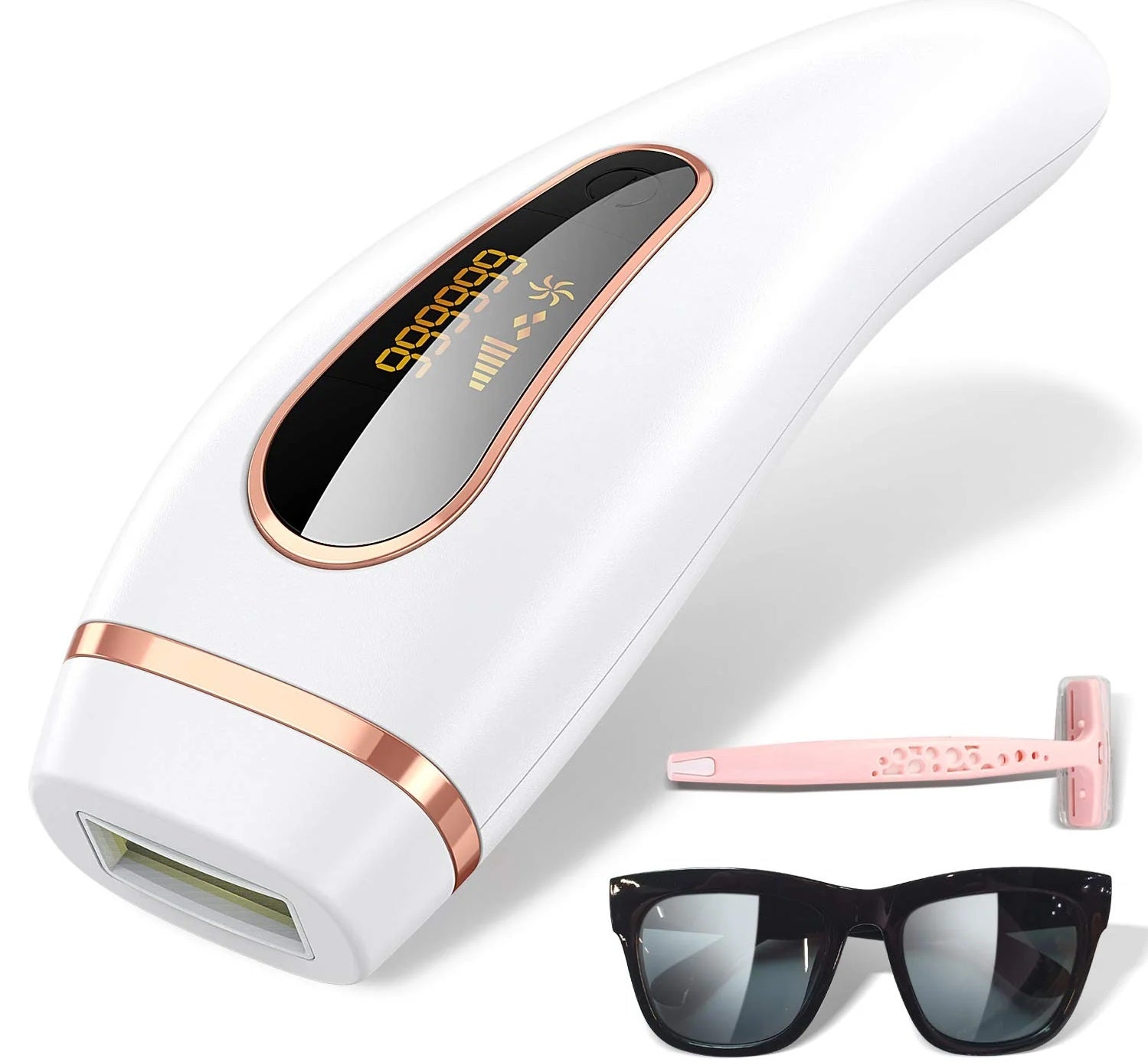Do I Shave Before Laser Hair Removal? The Dos and Don'ts for a Successful Treatment
An important question, should I shave before a laser hair removal session? Yes you should shave before a laser hair removal session. But why you ask?
Shaving before laser hair removal is seen as a precaution because you wish to eliminate as much hair as you can to prevent it from absorbing the majority of the laser's heat.
So, you've decided to take the leap and embark on a journey to smoother, hair-free skin with laser hair removal.
Congratulations on choosing one of the most popular and effective hair reduction methods available today!
But before you head to your first session, you might wonder: "Do I shave before laser hair removal?" Fear not! I'm here to guide you through the dos and don'ts to ensure you get the most out of your laser hair removal treatment and achieve the best results.
Why do you need to shave before Laser Hair Removal?
Shaving before laser hair removal is a standard practice. There are several reasons why shaving before we recommend your laser hair removal.
Effective Targeting:
Laser hair removal works by targeting the pigment in the hair follicles. When you shave before the session, you remove the visible hair on the surface. This allows the laser to focus on the hair follicles beneath the skin.
Reduced Surface Hair Interference:
Shaving eliminates the presence of surface hair. By removing surface hair, you can avoid the hair absorbing or scattering the laser energy. This helps ensure that the hair follicles absorb the laser, which leads to more effective hair removal.
Prevents Surface Hair Singeing:
Longer hair is known to absorb some of the laser energy. Absorbing laser energy can cause singeing or burning of the visible hair. Shaving minimizes this risk.
Enhanced Precision:
Shaving provides a clean and uniform surface. This allows the laser to target the hair follicles with greater precision. It also helps in achieving more consistent and predictable results.
Minimizes Discomfort:
Shaving before the treatment can reduce discomfort during the laser session. Charring or burning longer hairs could cause discomfort or an unpleasant smell, which can be avoided by shaving.
Prevents Skin Irritation:
Waxing or plucking before laser hair removal removes the entire hair follicle. This makes it almost impossible for the laser to target the hair follicle. Additionally, these methods can irritate the skin, making it more sensitive during laser treatment. Shaving is a gentler alternative.
The Importance of Shaving Before Laser Hair Removal
Shaving before laser hair removal is not just a convenience but a crucial step to ensure the success of your treatment. When you shave the treatment area beforehand, you create an optimal environment for the laser to target the hair follicles effectively.
By removing the hair above the skin's surface, the laser energy can penetrate the hair shaft and reach the melanin in the follicle more precisely. This targeted approach increases the chances of successful hair reduction and helps you achieve smoother skin over time.
Also, shaving before laser hair removal can prevent discomfort during treatment. When the laser encounters long or coarse hair on the skin's surface, it can cause a burning sensation or unpleasant smell as the hair absorbs the laser energy. Shaving eliminates these concerns, providing a smoother, more comfortable laser hair removal experience.
Why Not Waxing, tweeze, or plucking?
While shaving is recommended before laser hair removal, you should avoid waxing, tweezing, or plucking the hair in the treatment area for at least six weeks before your session. These methods remove the hair from the root, leaving the skin surface smooth but devoid of visible hair. As a result, the laser won't have any hair follicles to target during the treatment, rendering it less effective.
Waxing, tweezing, or plucking can also interfere with the hair growth cycle, disrupting the natural pattern of hair regrowth. This can make it more challenging for the laser to target the hair follicles consistently during your laser hair removal sessions.

Trimming vs Shaving: What's the Difference?
While shaving is generally the preferred method before laser hair removal, some clinics and laser hair spas may permit light trimming in some instances. The main difference between trimming and shaving is the hair length left above the skin's surface.
When you trim the hair, you leave a slightly longer hair shaft than shaving. While this might not be problematic for all individuals, some lasers may need help distinguishing the hair from the surrounding skin when the hair is too short. As a result, shaving is typically recommended as it leaves just enough of the hair above the skin to effectively allow the laser to target the hair follicles.
If you need help deciding whether to shave or trim before your laser hair removal appointment, consult with your provider. They can offer personalized guidance based on your skin type, hair colour, and the specific laser being used.
How to Properly Shave Before Laser Hair Removal
Now that we understand the importance of shaving before laser hair removal let's delve into the proper shaving process to ensure you get the most out of your treatment:
1. Choose the Right Razor: The right razor is essential for a smooth and effective shave. Use a high-quality razor with a sharp blade to prevent irritation and achieve the best results.
2. Cleanse Your Skin: Before shaving, cleanse the treatment area with a gentle cleanser to remove any dirt, oil, or product residue that might interfere with the shaving process.
3. Use Shaving Cream or Gel: Apply a generous amount of shaving cream or gel to the area you wish to treat. This helps the razor glide smoothly over the skin and minimizes the risk of nicks and cuts.
4. Shave in the Direction of Hair Growth: Shave in the direction of hair growth to avoid irritation and ingrown hairs. Shaving with grain is generally gentler on the skin.
5. Rinse and Pat Dry: After shaving, rinse the area with cool water and pat it dry with a clean towel. Avoid rubbing the skin, as this can irritate.
6. Avoid Depilatory Creams: Depilatory creams, which dissolve hair at the skin's surface, should be avoided before laser hair removal. These creams can affect the hair's melanin and interfere with the laser's ability to target the hair follicles.
7. Follow Your Technician's Instructions: If your laser hair removal technician provides specific guidelines or products to use before your session, follow their advice for optimal results.
The "Day Of" Shaving Rule
When it comes to the timing of shaving before your laser hair removal appointment, the general rule of thumb is to shave the day before or the same day as your treatment.
Shaving on the appointment day ensures that the treatment area is smooth and ready for the laser while minimizing any potential skin irritation.

What If I Forget to Shave Before My Appointment?
Sometimes, despite our best intentions, we might need to remember to shave before our laser hair removal appointment. Don't panic! Many reputable clinics keep disposable razors on hand and can quickly assist you with a last-minute shave before the session. However, try to arrive with freshly shaved skin to ensure the most effective treatment.
Post-Treatment Shaving
After your laser hair removal session, you may wonder if you can resume shaving the treated area. Absolutely! Some clinics recommend avoiding other hair removal methods like waxing, tweezing, or plucking between sessions. Shaving is considered safe and won't interfere with the treated hair follicles.
What Happens If You Don't Shave Before Using an At-Home Laser Hair Removal Device?
What Happens If You Skip Shaving?
If you skip shaving before using an at-home laser hair removal device, several things could happen:
1. Ineffective Treatment: As mentioned earlier, the laser won't be able to target the hair follicles effectively, resulting in less effective treatment. You may not see the desired hair reduction, and the results could be inconsistent.
2. Uneven or Patchy Results: The laser will only treat the visible hairs on the skin's surface without shaving. This can lead to uneven or patchy results, with some areas experiencing hair reduction while others remain unchanged.
3. Potential Skin Irritation: When the laser encounters long or coarse hairs on the skin's surface, it can cause discomfort, burning sensations, or even skin irritation. Shaving ensures a smoother treatment experience and minimizes the risk of adverse reactions.
4. Increased Risk of Burns: Without the protective barrier of freshly shaved hair, the laser's energy may be absorbed by the longer hair above the skin, potentially leading to burns or discomfort during the treatment.
5. Reduced Long-Term Results: Consistency is vital with laser hair removal. Skipping the initial shave could mean you'll need more sessions to achieve significant hair reduction, delaying your desired long-term results.

The Proper Pre-Treatment Shaving Process
To ensure the best results and a smooth experience when using an at-home laser hair removal device, follow these simple steps for pre-treatment shaving:
1. Choose the Right Razor: Opt for a high-quality razor with a sharp blade to achieve a clean and close shave. Avoid using old or dull razors, as they can irritate the skin.
2. Cleanse Your Skin: Before shaving, cleanse the treatment area with a gentle cleanser to remove any dirt, oil, or product residue that may interfere with the shaving process.
3. Use Shaving Cream or Gel: Apply a generous amount of shaving cream or gel to the area you wish to treat. This helps the razor glide smoothly over the skin and minimizes the risk of nicks and cuts.
4. Shave in the Direction of Hair Growth: Shave in the direction of hair growth to prevent irritation and ingrown hairs. Avoid shaving against the grain, increasing the risk of razor burns.
5. Rinse and Pat Dry: After shaving, rinse the area with cool water and pat it dry with a clean towel. Avoid rubbing the skin, as this can irritate.
6. Avoid Depilatory Creams: Depilatory creams, which dissolve hair at the skin's surface, should be avoided before using an at-home laser hair removal device. These creams can interfere with the laser's ability to target the hair follicles and reduce the treatment's effectiveness.
Shaving before using an at-home laser hair removal device is a crucial step that should be considered. Removing the hair above the skin's surface enables the laser to reach the hair follicles and achieve optimal results. Skipping this step can lead to ineffective treatment, uneven results, and potential skin irritation.
Conclusion
Shaving before laser hair removal is a crucial step to ensure the success and effectiveness of your treatment. Removing the hair above the skin's surface allows the laser to precisely target the hair follicles, leading to smoother, hair-free skin over time. Avoid waxing, tweezing, or plucking before your appointment, and opt for shaving instead.
Now that you're armed with the dos and don'ts of shaving before laser hair removal, you can confidently step into your treatment, knowing you're on the path to achieving your desired results. Embrace the convenience, effectiveness, and long-lasting benefits of laser hair removal as you bid farewell to the endless cycle of traditional hair removal methods. Happy shaving and laser-ing
